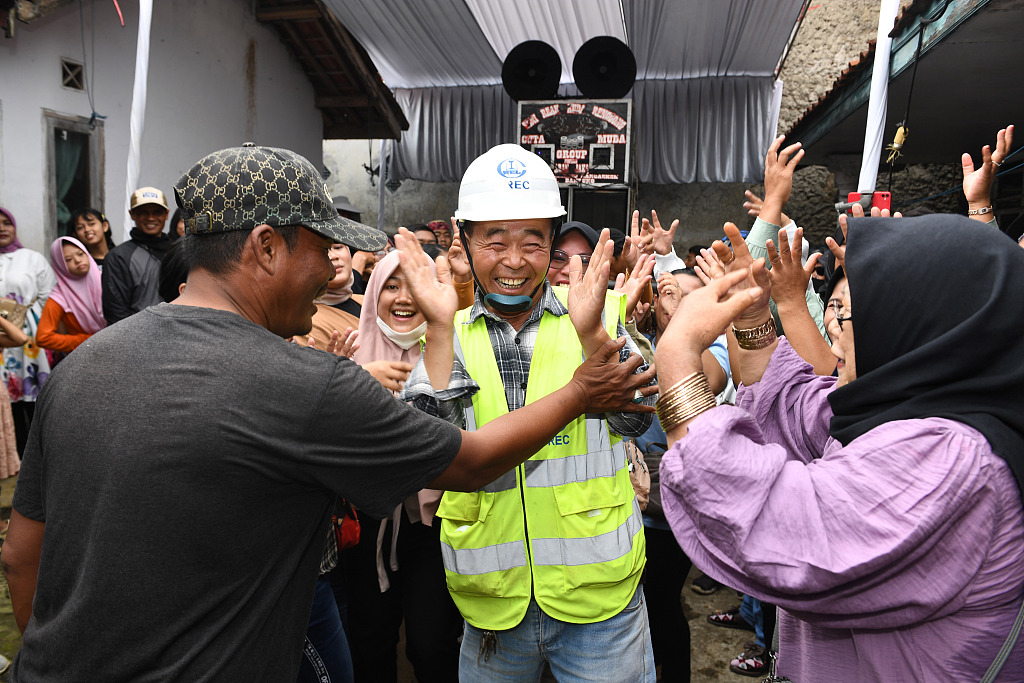
Italian Defense Minister Guido Crosetto waves as he arrives at the Quirinal Palace in Rome, Italy, October 22, 2022. /CFP
Italian Defense Minister Guido Crosetto waves as he arrives at the Quirinal Palace in Rome, Italy, October 22, 2022. /CFP
Editor's note: Hafijur Rahman, a special commentator for CGTN, is a security and strategic analyst working for a Strategic Studies Center in Bangladesh. The article reflects the author's opinions and not necessarily the views of CGTN.
Recent reports that Italy – the only G7 nation that had signed up to China's Belt and Road Initiative (BRI) – is now considering quitting the plan and pivoting back to Washington have given the Western-agenda-driven media another round of opportunity to smear China and its grand global-spanning infrastructure plan.
It should be no surprise, given that from the very beginning, the BRI – now in its 10th year – has always been an easy target of misplaced criticism and smear campaigns by the Western political leadership and corporate media apparatus.
Notwithstanding, the program is well into the revamped momentum as a total of 103 deals worth $43.3 billion were signed in the first six months of this year compared with $35 billion in the same period in 2022, according to a new report by Fudan University's Green Finance and Development Center.
The BRI is not just a "grab bag" program for constructing infrastructure projects abroad. It is a carefully designed scheme that lies at the core of China's national and international development policy, aiming to establish a global economic community with shared prosperity.
At the national policy level, the idea emerged from its miraculous development story and desire to extend the benefit to the world, particularly the Global South. China has observed that development, specifically in infrastructure, might be the most effective way to drive economic growth, increase employment opportunities and income, and ultimately enhance social justice and equality.

Local residents and Chinese construction workers, who built the Jakarta-Bandung high-speed railway, celebrate the project's completion in Bandung, Indonesia, July 1, 2023. /CFP
Local residents and Chinese construction workers, who built the Jakarta-Bandung high-speed railway, celebrate the project's completion in Bandung, Indonesia, July 1, 2023. /CFP
From an international perspective, the BRI was a prudent and timely response to address the ever-widening global infrastructural financing gap. According to the Organization for Economic Cooperation and Development, the world would need $95 trillion between 2016 and 2030 – equivalent to about $6.3 trillion each year. Additionally, there is a projected need for over $40 trillion by 2035 to support infrastructure development in developing countries, which has been further complicated by the effects of COVID-19 and climate change.
Given their long history of colonial exploitation and culpability for climate change, it is a moral obligation for the Western developed countries to help address the $40-trillion-plus infrastructural financing gap facing the developing world. Ironically, other than playing a complementary role, Western countries, more specifically the U.S., are engaged in rampant and relentless smear campaigns against the BRI – an evidentially promising program for low and middle-income countries.
According to numerous studies conducted by the World Bank, the BRI has the potential to significantly enhance trade flows in participating countries by up to 4.1 percent. Additionally, it can reduce global trade costs by 1.1 percent to 2.2 percent, and foster GDP growth in developing countries in the East Asian and Pacific region by about 2.6 percent to 3.9 percent on average. If the BRI transport projects are successfully implemented, they could reduce travel times along economic corridors by 12 percent, increase trade by 2.7 percent to 9.7 percent, increase income by up to 3.4 percent, and help lift approximately 7.6 million individuals out of extreme poverty, as per the World Bank's estimates.
However, the U.S. and its allies have launched several initiatives, trying to make them replace the BRI to address the infrastructure deficit in developing countries. These include the G7's Partnership for Global Infrastructure and Investment – a rebranded version of its previously botched initiative of Build Back Better World and Investment and the EU's Global Gateway Initiative. Highly underfunded ambitions, those initiatives have essentially proven to be political vaporware, failing to transition from statements of intent to concrete reality.
Most importantly, while the developing world needs more programs like the BRI other than competing schemes as a race to the bottom to undermine one another, the Western initiatives are largely focused on the role that those plans would play in their broader geopolitical battle against China. Pitching the global infrastructure investment on a zero-sum calculus, those strategic schemes are framed and pushed through as a part of their wider geopolitical chess game to undermine China's influence. Results are quite visible: more theater than substance.
The geo-politicization of global infrastructure financing is creating unwarranted complexities for developing countries, instead of rendering any tangible benefits to them. It will hurt the Global South's development prospects if the U.S. and its allies continue to parochially view the BRI as a plot by Beijing to undercut Western influence, and coax or coerce countries not to undertake even commercially viable and optimally beneficial infrastructure projects under the BRI.
(If you want to contribute and have specific expertise, please contact us at opinions@cgtn.com. Follow @thouse_opinions on Twitter to discover the latest commentaries in the CGTN Opinion Section.)